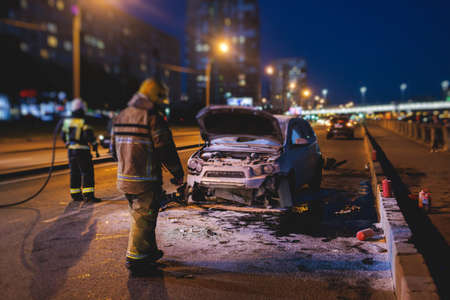Introduction: Navigating Insurance Amid Natural Disasters
With wildfires, hurricanes, floods, and tornadoes becoming more common across the United States, protecting your family and your home has never been more important. For many American families, insurance is the safety net that helps rebuild lives after disaster strikes. But not all insurance policies are created equal—especially when it comes to homeowners and renters insurance. Understanding the key differences between these two types of coverage can make a world of difference when you’re faced with a natural disaster. Whether you own your house or rent an apartment, knowing what’s actually protected—and what isn’t—can save you from unexpected financial stress and help you make better decisions for your family’s security. As we see more frequent and severe weather events nationwide, it’s crucial for every household to be clear on where their insurance stands before the next storm rolls in.
Core Differences Between Homeowners and Renters Policies
Understanding the core differences between homeowners and renters insurance is essential for families looking to protect their homes and belongings from natural disasters. Both policies offer valuable protection, but what they cover—and what they don’t—can make a big difference when disaster strikes.
What Each Policy Covers
| Homeowners Insurance | Renters Insurance | |
|---|---|---|
| Dwelling (Structure) | Covers damage to the home’s structure, including walls, roof, and built-in appliances. | Does not cover the building itself; that’s the landlord’s responsibility. |
| Personal Belongings | Covers family possessions like furniture, clothes, electronics, and toys. | Covers your personal items inside the rental—think computers, kids’ bikes, or kitchen gadgets. |
| Liability Protection | Covers you if someone is injured on your property or if you accidentally cause property damage to others. | Covers you for accidental injury or damage to others in your rented home or apartment. |
| Additional Living Expenses (ALE) | Pays for temporary housing and meals if your home becomes unlivable due to a covered disaster. | Pays for temporary living expenses if your rental is damaged by a covered event. |
Family-Focused Examples
For Homeowners: If a tornado damages your house, homeowners insurance helps pay for repairs to both the structure and your family’s belongings. It also covers hotel stays while repairs are underway.
For Renters: If a fire in your apartment building destroys your furniture and clothes, renters insurance replaces those items and pays for you and your children to stay somewhere safe until you can return home. The landlord’s policy will fix the building itself, not your personal things.
Key Takeaway for Families
No matter if you own or rent, protecting your family’s well-being means knowing exactly what’s covered—and what isn’t. Choosing the right policy gives you peace of mind when facing unexpected events like hurricanes or wildfires.

3. Natural Disasters: What’s Typically Covered (and What’s Not)
When it comes to natural disasters, understanding what your insurance covers is crucial for protecting your home and family. Both homeowners and renters policies can provide peace of mind, but there are key differences in what’s typically covered under standard policies—and just as important, what isn’t. Let’s break down the coverage for some of the most common disasters American families face.
Hurricanes and Windstorms
Standard homeowners insurance generally covers damage caused by windstorms, including hurricanes, as long as the damage is due to wind and not flooding. This means if a hurricane blows off your roof or damages windows, you’re likely protected. However, renters insurance usually covers only personal belongings damaged by wind inside the rented property—not the building itself. It’s also important to note that in high-risk coastal areas, homeowners may have separate windstorm deductibles or need to purchase extra wind coverage.
What’s Usually Not Covered?
Flooding caused by storm surge is not covered by either standard homeowners or renters policies. For this, you’ll need separate flood insurance through the National Flood Insurance Program (NFIP) or a private insurer.
Wildfires
Both homeowners and renters policies typically cover losses from wildfires. Homeowners insurance will pay for repairs to your house and other structures on your property, while renters insurance helps replace personal belongings lost in a fire. With wildfires becoming more frequent in many parts of the U.S., this coverage can be essential for families living in vulnerable areas.
What’s Usually Not Covered?
If negligence or intentional actions cause the fire, claims may be denied. Also, additional living expenses—like hotel stays during evacuation—are generally covered up to policy limits, so check those details carefully.
Earthquakes
Most standard homeowners and renters insurance policies do not cover earthquake damage. If you live in an area prone to earthquakes (such as California), you’ll need to purchase separate earthquake insurance to protect your home or belongings from this type of disaster.
What’s Usually Not Covered?
Cracks in your foundation or walls caused by earth movement are excluded unless you have specific earthquake coverage added to your policy.
Floods
Flooding is a major exclusion in both standard homeowners and renters policies across the U.S. Whether it’s from heavy rain, overflowing rivers, or flash floods, you’ll need a dedicated flood insurance policy to get protection for structural damage (homeowners) or personal property loss (renters).
Family Tip:
If your family lives in a flood-prone area—even if it hasn’t flooded before—it’s wise to consider supplemental flood coverage. Many families don’t realize they aren’t protected until it’s too late.
The Bottom Line
No matter where you live, it pays to review your policy details and speak with your agent about specific risks in your region. Understanding which natural disasters are covered—and securing extra protection if needed—can help keep your loved ones safe and give you confidence when storms hit home.
4. Common Exclusions and Limitations in U.S. Insurance Policies
Understanding the fine print of homeowners and renters insurance policies is crucial, especially when it comes to natural disasters. Many American families are surprised to learn that some of the most common and costly natural events are not automatically covered by standard insurance. Here’s what you need to know about frequent exclusions and how they can affect your family’s protection.
Typical Exclusions in Standard Policies
Most homeowners and renters policies provide broad protection against common risks like fire, theft, and certain types of water damage. However, there are notable exceptions—especially when it comes to natural disasters. Below is a table summarizing what is typically excluded:
| Disaster Type | Homeowners Policy | Renters Policy |
|---|---|---|
| Floods | Not Covered* | Not Covered* |
| Earthquakes | Not Covered* | Not Covered* |
| Mold/Dampness | Limited/Excluded | Limited/Excluded |
| Landslides/Mudslides | Not Covered | Not Covered |
| Sewer Backup | Usually Excluded** | Usually Excluded** |
*Separate flood or earthquake insurance must be purchased.
**May be available as an add-on endorsement.
Why These Exclusions Matter for Families
If your home or rental is damaged by a flood or earthquake, standard insurance won’t help unless you’ve bought extra coverage. This could mean paying out-of-pocket for costly repairs or replacing belongings, which can have a major impact on your family’s finances and recovery after a disaster.
Practical Tips for Better Protection
- Assess Your Risks: Consider where you live. If you’re in a flood zone or near a fault line, specialized coverage is essential.
- Add Supplemental Policies: Ask your agent about purchasing separate flood or earthquake insurance through the National Flood Insurance Program (NFIP) or private insurers.
- Review Policy Limits: For risks like sewer backup, check if you can add endorsements for more comprehensive protection.
- Create an Inventory: Keep a detailed list of your belongings with photos—this makes claims easier if disaster strikes.
- Read the Fine Print: Go over your policy documents carefully each year to spot new exclusions or changes in coverage.
The Bottom Line for U.S. Families
No one wants to be caught off guard when disaster hits. Understanding what your homeowners or renters insurance does—and doesn’t—cover helps you make smart decisions so your family is better prepared for whatever nature throws your way.
5. Supplemental Coverage: When and Why You Might Need It
While standard homeowners and renters insurance policies offer protection for many natural disasters, there are notable gaps—especially when it comes to events like floods and earthquakes. Understanding supplemental coverage options is crucial for families who want to protect their homes and belongings fully.
Flood Insurance: Not Just for Coastal Areas
Many people assume they’re safe from flooding if they don’t live near a river or the coast, but flooding can happen almost anywhere due to heavy rainfall, snowmelt, or drainage issues. Standard policies typically exclude flood damage. If you live in a high-risk area as defined by FEMA, your mortgage lender may even require separate flood insurance. Even if you’re in a lower-risk zone, consider the potential costs of recovery compared to the price of a policy through the National Flood Insurance Program (NFIP) or private insurers.
Earthquake Insurance: Assessing Regional Risk
Earthquakes aren’t just a California issue—states like Oklahoma and even parts of the Midwest have seen increased seismic activity. Most homeowners and renters insurance policies do not cover earthquake damage. Earthquake insurance is often available as an add-on or separate policy. Families should research local seismic risk maps, evaluate the age and construction of their home, and weigh whether the extra expense fits their budget versus potential out-of-pocket rebuilding costs.
Action Steps for Families
- Research your area’s history of natural disasters using resources like FEMA’s Flood Map Service Center and USGS earthquake hazard maps.
- Talk to your insurance agent about what is—and isn’t—included in your current policy.
- Calculate how much it would cost to replace your belongings or rebuild your home after a disaster not covered by your base policy.
- If you rent, ask your landlord about building coverage, but remember that only renters insurance (with possible add-ons) will cover your personal property.
Bottom Line
No one likes to imagine a worst-case scenario, but taking time now to assess whether supplemental flood or earthquake coverage makes sense can save your family major financial headaches later. Weigh the risks in your area, consult with an insurance professional, and make sure your coverage matches your family’s needs.
6. Practical Tips for Reviewing and Updating Your Policy
Step 1: Set a Regular Review Schedule
It’s easy to forget about your insurance policy until you need it, but regular reviews can save you from headaches later. Set a reminder to review your homeowners or renters insurance annually—consider doing this at the start of hurricane or wildfire season. This way, your coverage will stay up to date with any changes in your life or property.
Step 2: Update Your Home Inventory List
Take time as a family to walk through your home and update your inventory list. Use your smartphone to take photos or videos of valuable items, receipts, and serial numbers. Store these records in a safe digital location, like cloud storage. An updated inventory makes filing claims much smoother if disaster strikes.
Step 3: Understand What’s Covered—and What Isn’t
Carefully read through your policy or talk with your insurance agent about what natural disasters are covered. Homeowners policies often exclude flood and earthquake damage unless you purchase separate coverage. Renters policies may also have limitations on certain perils. Knowing the gaps in advance helps you decide if you need extra protection.
Step 4: Check Policy Limits and Deductibles
Review the maximum payout amounts (limits) for both dwelling and personal property coverage, and compare them to the current value of your belongings and home improvements. Also, make sure you’re comfortable with the deductible amounts—the amount you’ll pay out of pocket before insurance kicks in—especially for specific disasters like windstorms or earthquakes that sometimes have higher deductibles.
Step 5: Confirm Additional Living Expenses Coverage
If your home becomes unlivable after a disaster, you’ll want reassurance that your policy includes adequate “loss of use” or additional living expenses coverage to pay for hotel stays, meals out, and other temporary costs. Double-check this section so your family isn’t left scrambling for funds when you need them most.
Step 6: Discuss Needs with Your Insurance Agent
Your family’s needs change over time—maybe you’ve renovated the basement, added high-value electronics, or welcomed a new pet. Share these updates with your agent and ask whether additional riders or endorsements are needed. They can help tailor your policy so that it truly fits your current situation.
Making Policy Reviews a Family Habit
By involving everyone in the household, not only do you make sure all assets are accounted for, but you also teach kids the importance of preparedness. Turn policy reviews into a family activity so everyone knows where vital documents are stored and what steps to take if disaster hits.
7. Conclusion: Ensuring Peace of Mind for Your Household
Understanding the differences between homeowners and renters insurance is essential for every family, especially when it comes to protection during natural disasters. As we’ve explored, homeowners policies generally cover both the structure of your home and your belongings, while renters insurance focuses on personal property and liability, not the building itself. Both types of policies often exclude damage from floods and earthquakes unless you purchase additional coverage, which is a crucial point for families living in high-risk areas.
To truly safeguard your household, review your current policy details and have an open conversation with your insurance agent about any gaps in coverage. Consider adding riders or separate policies for specific risks relevant to your region. Make a habit of updating your home inventory list and documenting valuable possessions—this can make filing claims much smoother when disaster strikes.
Remember, insurance isn’t just another bill—it’s a foundation for peace of mind. By taking proactive steps today, like understanding your coverage limits and securing extra protection where needed, you’re helping ensure that your family will be supported if the unexpected happens. Prioritizing these preparations means less stress and more confidence that you’ll weather any storm together.


